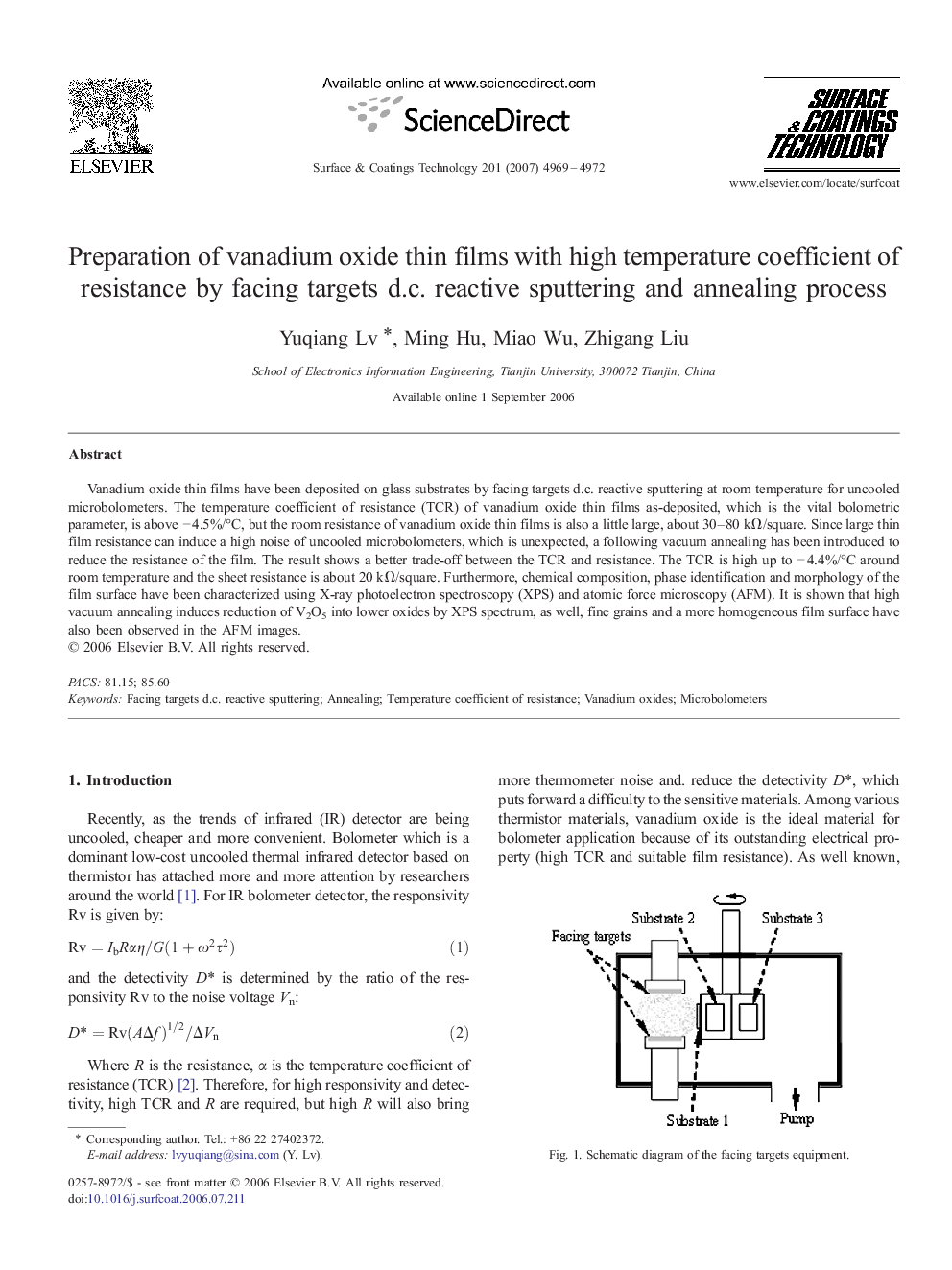| Article ID | Journal | Published Year | Pages | File Type |
|---|---|---|---|---|
| 1661563 | Surface and Coatings Technology | 2007 | 4 Pages |
Vanadium oxide thin films have been deposited on glass substrates by facing targets d.c. reactive sputtering at room temperature for uncooled microbolometers. The temperature coefficient of resistance (TCR) of vanadium oxide thin films as-deposited, which is the vital bolometric parameter, is above − 4.5%/°C, but the room resistance of vanadium oxide thin films is also a little large, about 30–80 kΩ/square. Since large thin film resistance can induce a high noise of uncooled microbolometers, which is unexpected, a following vacuum annealing has been introduced to reduce the resistance of the film. The result shows a better trade-off between the TCR and resistance. The TCR is high up to − 4.4%/°C around room temperature and the sheet resistance is about 20 kΩ/square. Furthermore, chemical composition, phase identification and morphology of the film surface have been characterized using X-ray photoelectron spectroscopy (XPS) and atomic force microscopy (AFM). It is shown that high vacuum annealing induces reduction of V2O5 into lower oxides by XPS spectrum, as well, fine grains and a more homogeneous film surface have also been observed in the AFM images.
